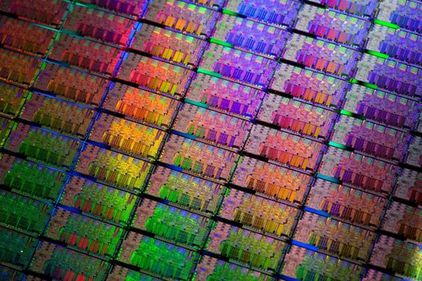Nanotechnology
We are all witnesses to an incredible development that has spread out during the past 20 years like a new evolution and which can certainly be compared to the occurrence. Back then it was also a so-called “bottom up” process in which the smallest building blocks, the atoms and molecules came together and formed larger, more complex parts. During the past few decades, humanity has learnt to make the world of atoms and molecules visible, in order to manipulate it in a targeted way. Humanity has learnt to produce fine structures and to influence the interaction of atoms. The complexity of what humans can now achieve is still very modest in comparison to nature, but the resulting products are already thoroughly impressive even today.

Nanotechnology is not only regarded as the key technology of the 21st century, but also provides new evidence of this every day. For a current Sandy Bridge processor from Intel to perform its work in our computers, it currently requires 2.3 billion transistors, which have an average size of only 32 nm. Only this way is it possible for the Intel Chip to be only the size of a fingernail. The picture shows a view of a silicon wafer, a circular, roughly one-millimetre-thick disc, manufactured from monocrystalline workpieces, so-called ingots, and which acts as the baseplate for electronic components, such as processors.
In 1988, the GMR effect (giant magnetoresitance effect) was discovered, a quantum mechanical effect, based on nanometre-thick magnetic layers. This allowed an entirely new generation of hard drives, which was introduced onto the market in 1997 by IBM. After only 10 years, this new generation of hard-drives had achieved 100% market penetration and it is the reason for larger and larger storage media. This discovery was acknowledged with the Nobel Prize in 2007. These outstanding hard drives still, today, require thousands upon thousands of atoms per bit for the storage of information. The next revolution has, however, already begun in this connection. A German-American research team has developed so-called nano-magnetic memory with storage capability corresponding to that of human genetic material, which is to say only 12 atoms are required for 1 bit. This technology is not yet ready for series production however.
Our mobility will also be fundamentally changed by nanotechnology. Whereas anti-reflective layers in a car’s windscreen only make car driving more comfortable, and scratch-resistant coatings in car paint only prevent damage, electric cars are completely inconceivable without nanotechnology, because only nanotechnology allows the development of high-performance batteries.

Energy generation, energy storage and new light sources (OLED, etc.) are further examples of how nanotechnology is changing our lives. The picture opposite shows the prototype of a flexible colour display consisting of OLEDs.
The fact that nanoparticles are entirely transparent, and can thus also be transparently incorporated in existing paints, glasses and plastics, makes it possible to transfer the properties of nanomaterials into more complex materials very elegantly. On top of this is the fact that previously known material properties sometimes change completely in the “nanoworld”. For example, the white pigment titanium dioxide becomes a UV absorber and ferric oxide particles become superparamagnetic, enabling them to be used to fight against cancer.
Nanotechnology is revolutionising information gathering and information processing, sensors are becoming more sensitive, actuators are performing increasingly complex tasks in increasingly inaccessible places. We will no longer want or be able to do without nanotechnology, because without it we would no longer be able to receive decisive information or would only be able to receive it late or in a very diluted form. An energy transformation away from fossil and nuclear fuels to renewable energy sources will also not be possible without nanotechnology, because it will be vital for energy generation (conversion), energy transport and especially energy storage. Not to mention the immense possibilities opened up in medicine and medical technology by the smallness of nanotechnology, through new diagnostics and entirely new cures.
